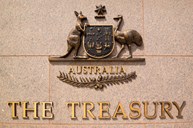2024 Federal Budget Tax Updates
The Treasurer, Jim Chalmers, handed down the 2024 Federal Budget on 14th May 2024. The headline measure in this year’s Federal Budget is one we already knew about – individual tax cuts.
From 1 July 2024, all 13.6 million taxpayers will get a tax cut, which will flow through into their pay packets immediately thereafter. These tax cuts replace the original Stage 3 tax cuts which were legislated by the former government.
The tax cuts may provide some relief from the surging cost of living to some taxpayers, especially low and middle income taxpayers.
As originally designed by the Liberal/National government, the tax cuts delivered most of the benefit to those on high incomes. The revised tax cuts see the benefits spread out further, and will now allow people earning $40,000 to get a tax cut of $654 and people earning $80,000 to get a tax cut of $1,679.
Taxpayers don’t need to do anything to get the tax cut. Employers will automatically adjust the amount of tax they take out of your pay which means you should see an immediate increase in take home pay from 1 July 2024*.
Read to see how these tax changes affect you.
*Personal Tax Cuts
The effect of the tax cuts can best be illustrated in table form. The original stage 3 cuts are those suggested by the Coalition and the revised tax cuts are those announced (and legislated) by the Albanese government.
Redistribution of tax cuts
| Taxable income | Tax cut under original stage 3 | Tax cut under revised stage 3 | Difference |
| $20,000 | $0 | $0 | 0 |
| $30,000 | $0 | $354 | 354 |
| $40,000 | $0 | $654 | 654 |
| $50,000 | $125 | $929 | 804 |
| $60,000 | $375 | $1,179 | 804 |
| $70,000 | $625 | $1,429 | 804 |
| $80,000 | $875 | $1,679 | 804 |
| $90,000 | $1,125 | $1,929 | 804 |
| $100,000 | $1,375 | $2,179 | 804 |
| $120,000 | $1,875 | $2,679 | 804 |
| $140,000 | $3,275 | $3,729 | 454 |
| $160,000 | $4,675 | $3,729 | -946 |
| $180,000 | $6,075 | $3,729 | -2,346 |
| $200,000 | $9,075 | $4,529 | -4,546 |
| $250,000 | $9,075 | $4,529 | -4,546 |
Note: excludes Medicare levy
Individuals
Personal Tax Rates Cut
The undoubted headline of this year’s Budget was the cut to personal tax rates, which was initially announced back in January 2024. Key features include:
-
A cut in the 19% tax rate to 16%, saving $804 for those on taxable incomes of $45,000
-
A cut in the 32.5% rate to 30% for incomes between $45,000 and $135,000
-
Retaining the 37 per cent rate but increasing the threshold for it to apply to $135,000.
-
Retaining the current 45% tax rate but increasing the threshold to $190,000
-
Resident rates and thresholds for 2024-25
The tax rates and income thresholds from the 2024-25 for residents (as already legislated) are:
Tax rates and income thresholds from 2024-25
| Taxable income | Tax payable |
| $0 - $18,200 | Nil |
| $18,201 - $45,000 | Nil + 16% of excess over $18,200 |
| $45,001 - $135,000 | $4,288 + 30% of excess over $45,000 |
| $135,001 - $190,000 | $31,288 + 37% of excess over $135,000 |
| $190,001+ | $51,638 + 45% of excess over $190,000 |
Non resident tax rates and threshold for 2024-25
For 2024-25 and later income years, the tax rates for foreign residents are:
-
$0 - $135,000 - 30%;
-
$135,001 - $190,000 - 37%;
-
$190,001+ - 45%.
Working holidaymakers
For 2024-25 and later income years, the rates of tax for working holiday makers are:
-
$0 - $45,000 - 15%;
-
$45,001 - $135,000 - 30%;
-
$135,001 - $190,000 - 37%;
-
$190,001+ - 45%.
Low Income Tax Offset (unchanged)
No changes were made to the low income tax offset (LITO) in the 2024-25 Budget.
| Taxable income (TI) | Amount of offset |
| $0 - $37,500 | $700 |
| $37,501 - $45,000 | $700 - ([TI - $37,500] x 5%) |
| $45,001 - $66,667 | $325 - ([TI - $45,000] x 1.5%) |
| $66,668 + | Nil |
The maximum amount of the LITO is $700. The LITO is withdrawn at a rate of 5 cents per dollar between taxable incomes of $37,500 and $45,000 and then at a rate of 1.5 cents per dollar between taxable incomes of $45,000 and $66,667.
Medicare low-income thresholds for 2022-23
The Medicare levy low-income thresholds for 2023-24 would normally have been announced in this 2024-25 Budget. However, the Government released the 2023-24 Medicare levy thresholds on 25 January 2024 when it announced the changes to the Stage 3 tax cuts (see above). The new thresholds to provide cost-of-living relief were enacted by the Treasury Laws Amendment (Cost of Living - Medicare Levy) Act 2024.
From the 2023-24 income year, the Medicare levy low-income threshold for singles has been increased to $26,000 for 2023-24 (up from $24,276 for 2022-23). This represents an increase of 7.1 per cent, in line with inflation.
For couples with no children, the family income threshold is $43,846 (up from $40,939 for 2022-23). The additional amount of threshold for each dependent child or student is $4,027 (up from $3,760).
For single seniors and pensioners eligible for the SAPTO, the Medicare levy low-income threshold is $41,089 (up from $38,365). The family threshold for seniors and pensioners is $57,198 (up from $53,406), plus $4,027 for each dependent child or student (up from $3,760).
Student loan indexation to be reformed
In a welcome move by many, the government is to reform the indexation of HECS and HELP debts to the lower of the consumer price index (CPI) and the wage price index (WPI). This move is to be backdated to June 2023, which means that last year’s increase of 7.1 per cent will be lowered to the WPI of 3.2 per cent. This will wipe out around $3 billion in student debt from more than three million Australians.
The effect of this measure can be seen in the following table:
| If your HECS debt balance is: | You should get this much back: |
| $15,000 | $675 |
| $25,000 | $1,120 |
| $30,000 | $1,345 |
| $35,000 | $1,570 |
| $40,000 | $1,795 |
| $45,000 | $2,020 |
| $50,000 | $2,245 |
| $60,000 | $2,690 |
| $100,000 | $4,485 |
| $130,000 | $5,835 |
Small Business
Instant Asset Write Off Extended For A Further Year
The instant asset write-off is to be retained for a further year through to 30 June 2025.
Small businesses, i.e., those with aggregated annual turnover of less than $10 million, will be able to immediately deduct the full cost of eligible assets costing less than $20,000 that are first used or installed ready for use between 1 July 2024 and 30 June 2025. The $20,000 threshold will apply on a per asset basis, so small businesses can instantly write off multiple assets.
Assets valued at $20,000 or more (which cannot be immediately deducted) can be placed into the small business simplified depreciation pool and depreciated at 15% in the first income year and 30% each income year thereafter.
This measure was already in force for the year through to 30 June 2024 and its extension represents a welcome break for small businesses.
Tax Compliance
ATO Personal Tax Compliance Program extended
The Government will extend the ATO Personal Income Tax Compliance Program for one year from 1 July 2027.
This extension will enable the ATO to continue to deliver a combination of proactive, preventative and corrective activities in key areas of non-compliance, including overclaiming of deductions, incorrect reporting of income and inappropriate tax agent influence. This will enable the ATO to continue its focus on emerging risks to the tax system, such as deductions relating to short-term rental properties.
ATO counter-fraud strategy
The Government will provide $187.0 million over four years from 1 July 2024 to the ATO to strengthen its ability to detect, prevent and mitigate fraud against the tax and superannuation systems. Funding includes:
-
$78.7 million for upgrades to information and communications technologies to enable the ATO to identify and block suspicious activity in real time
-
$83.5 million for a new compliance taskforce to recover lost revenue and intervene when attempts to obtain fraudulent refunds are made
-
$24.8 million to improve the ATO’s management and governance of its counter-fraud activities, including improving how the ATO assists individuals harmed by fraud.
The Government will also strengthen the ATO’s ability to combat fraud by extending the time the ATO has to notify a taxpayer if it intends to retain a business activity statement (BAS) refund for further investigation. The ATO’s mandatory notification period for BAS refund retention will be increased from 14 days to 30 days to align with time limits for non-BAS refunds.
This will have effect from the start of the first financial year after Royal Assent of the enabling legislation.
Foreign Resident Capital Gains Tax Regime To Be Strengthened
The Government will strengthen the foreign resident capital gains tax (CGT) regime to ensure foreign residents pay their fair share of tax in Australia and to provide greater certainty about the operation of the rules. The amendments will apply to CGT events commencing on or after 1 July 2025 to:
-
clarify and broaden the types of assets that foreign residents are subject to CGT on
-
amend the point-in-time principal asset test to a 365-day testing period
-
require foreign residents disposing of shares and other membership interests exceeding $20 million in value to notify the ATO, prior to the transaction being executed.
This measure will ensure that Australia can tax foreign residents on direct and indirect sales of assets with a close economic connection to Australian land, more in line with the tax treatment that already applies to Australian residents. The new ATO notification process will improve oversight and compliance with the foreign resident CGT withholding rules, where a vendor self-assesses their sale is not taxable real property.
ATO to be granted greater discretion over old tax debts
The government will amend the tax law to give the Commissioner of Taxation a discretion to not use a taxpayer’s refund to offset old tax debts, where the Commissioner had put that old tax debt on hold prior to 1 January 2017. This discretion will apply to individuals, small businesses and not-for-profits.
Superannuation
Paying super on Government Paid Parental Leave from 1 July 2025
The Budget confirmed the proposal to pay superannuation on Government-funded Paid Parental Leave (PPL) for births and adoptions on or after 1 July 2025. From that time, the super guarantee (SG) rate will be 12% (up from 11.5% for 2024-25). Therefore, eligible parents will receive an additional payment (12% of their PPL payments) as a contribution by the Government to their superannuation fund.
Updated May 2024

Still have questions?
We have the answers. Let us take care of you and your tax needs.




.png?width=55&height=48&ext=.png)
-1.svg)

